| 0 | 1 | 2 | 3 | 4 | 5 | 6 | 7 | 8 | 9 |
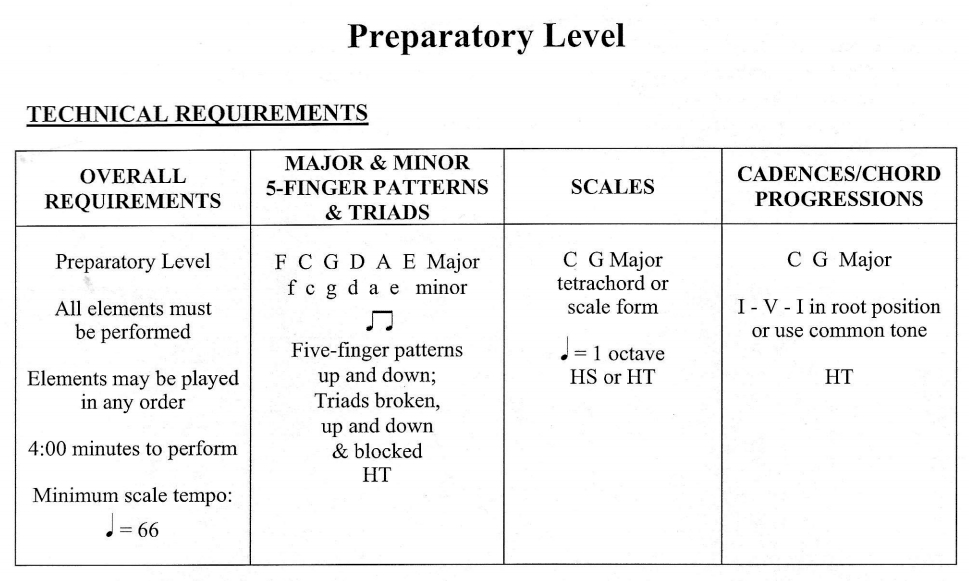
| all elements |
F
C
G
D
A
E f c g d a e |
C G | C G |
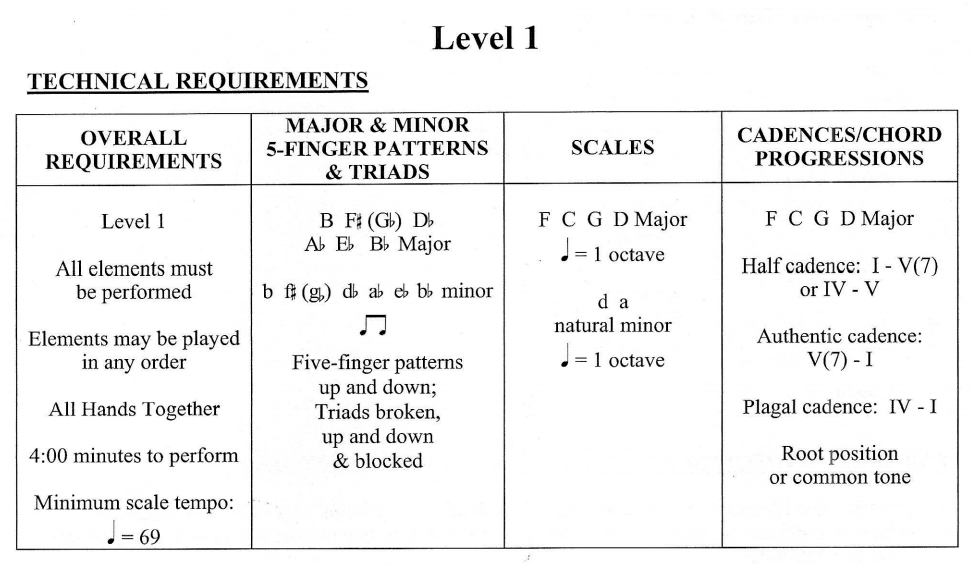
| all elements |
B
F#
Db
Ab
Eb
Bb b f# db ab eb bb |
F
C
G
D d a |
F
C
G
D |
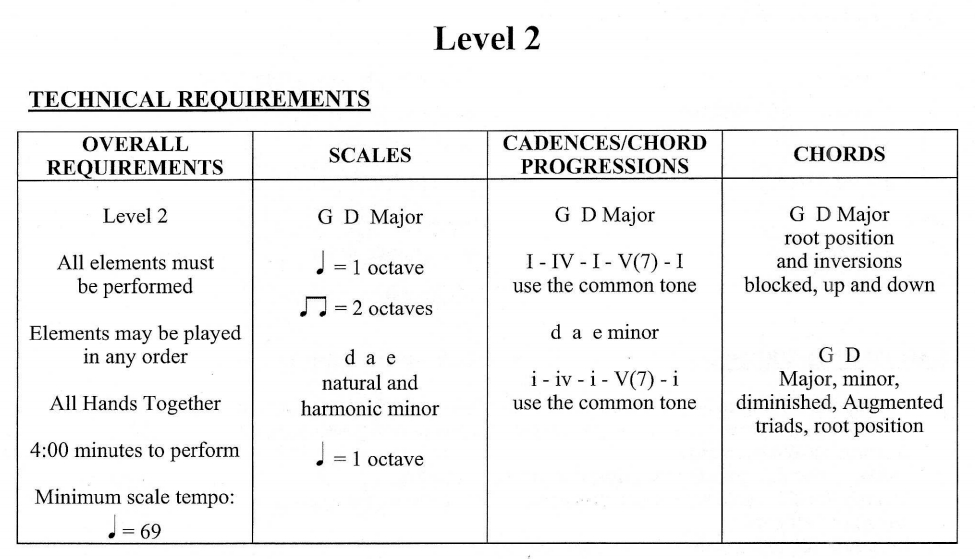
| all elements |
G
D d a e |
G
D d a e |
G
D G D |
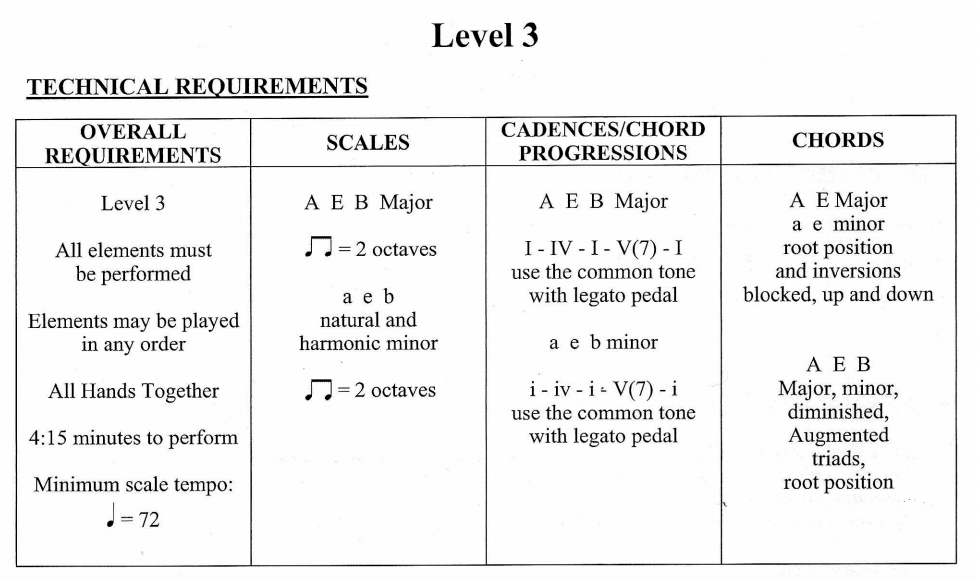
| all elements |
A
E
B a e b |
A
E
B a e b |
A
E a e A E B |
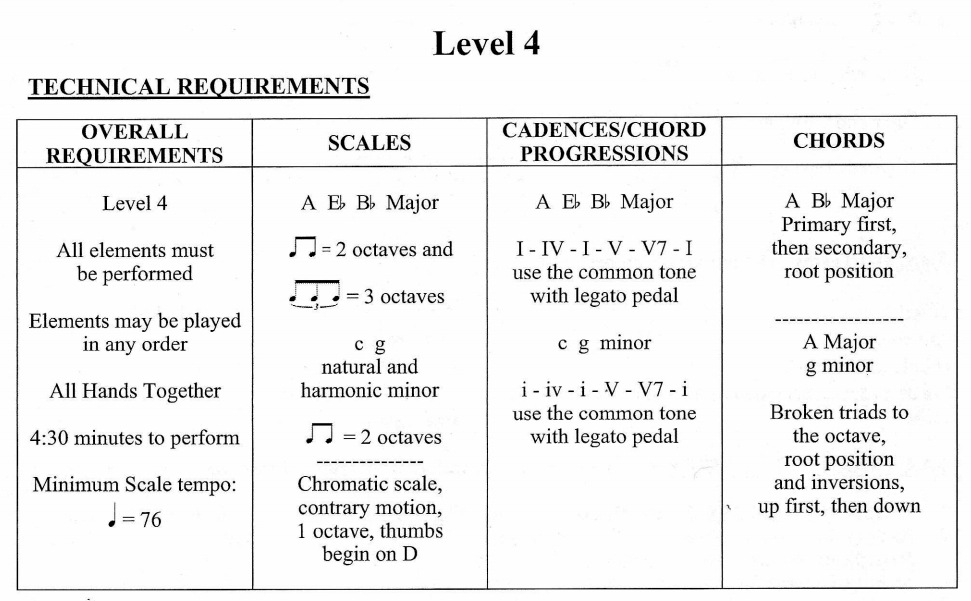
| all elements |
A
Eb
Bb c g D |
A
Eb
Bb c g |
A
Bb A g |
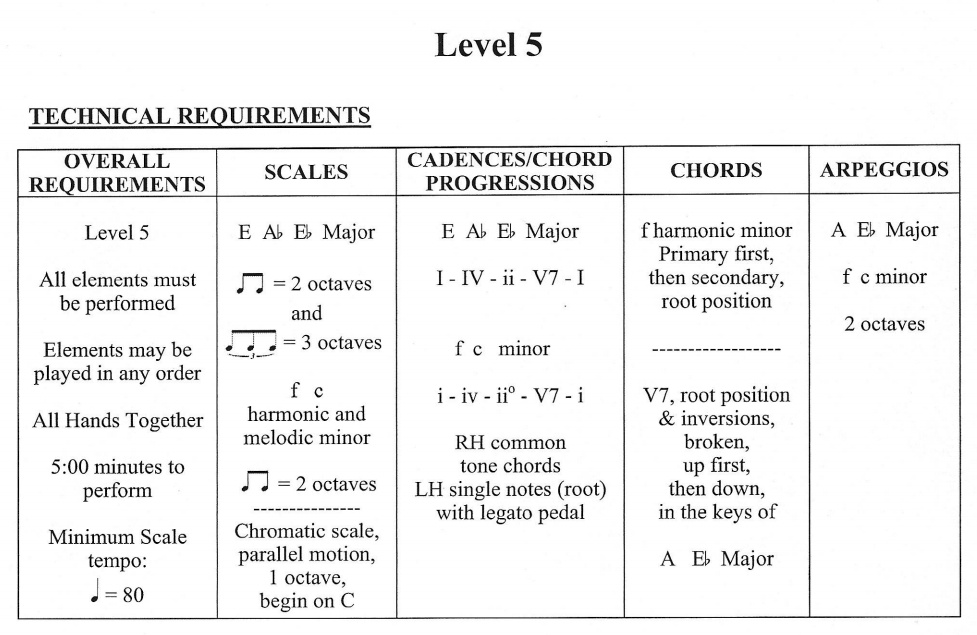
| all elements |
E
Ab
Eb f c C |
E
Ab
Eb f c |
f A Eb |
A
Eb f c |
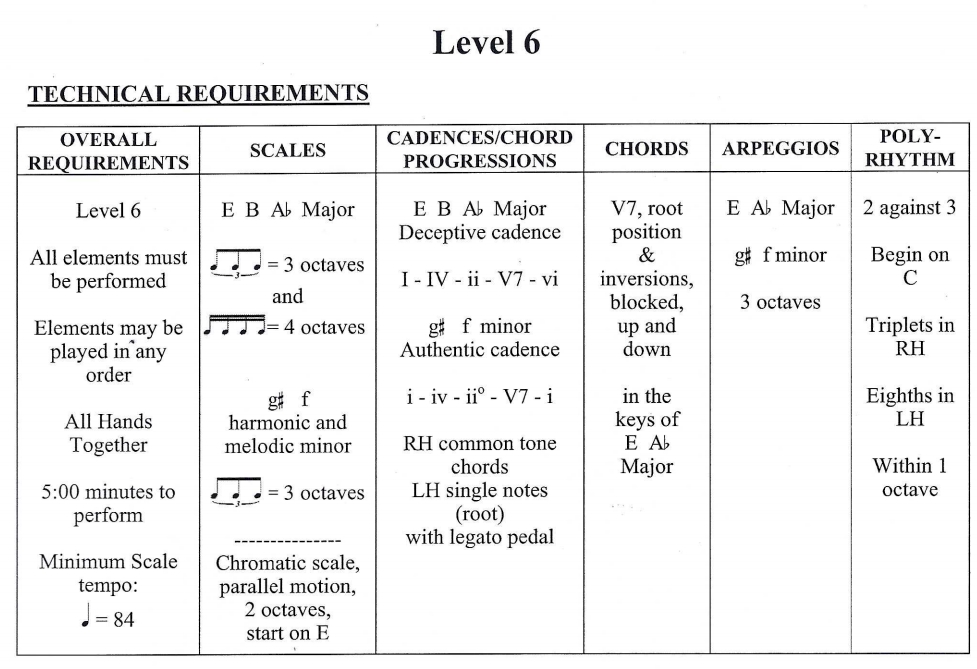
| all elements |
E
B
Ab g# f E |
E
B
Ab g# f |
E
Ab |
E
Ab g# f |
C |
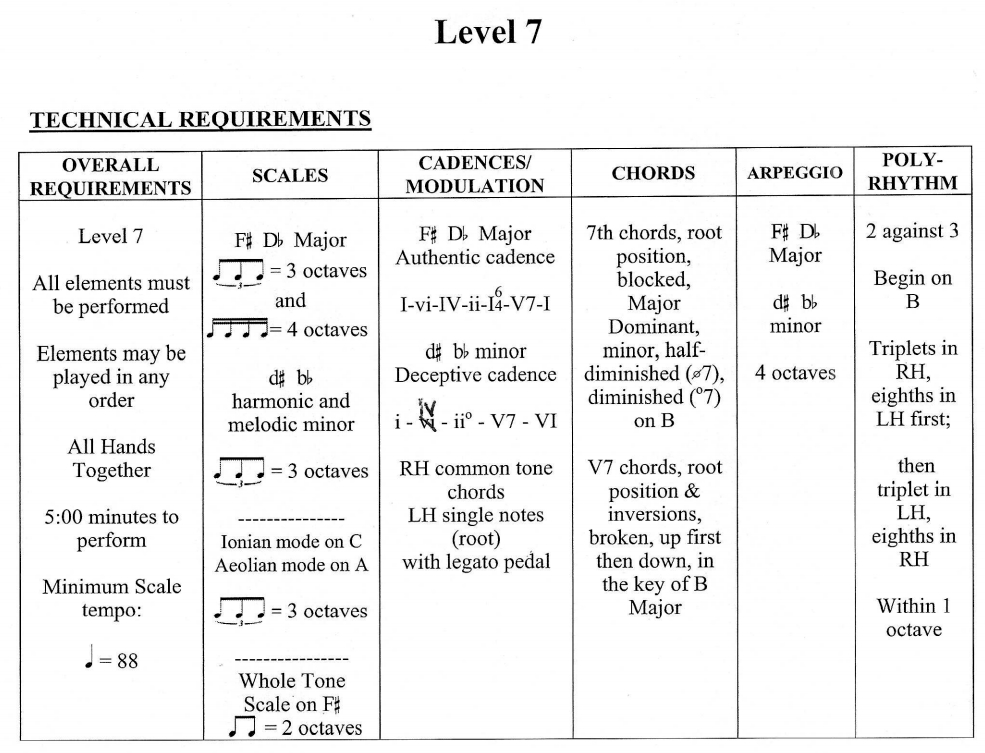
| all elements |
F#
D# d# bb C A F# |
F#
Db d# bb |
B B |
F#
Db d# bb |
B |
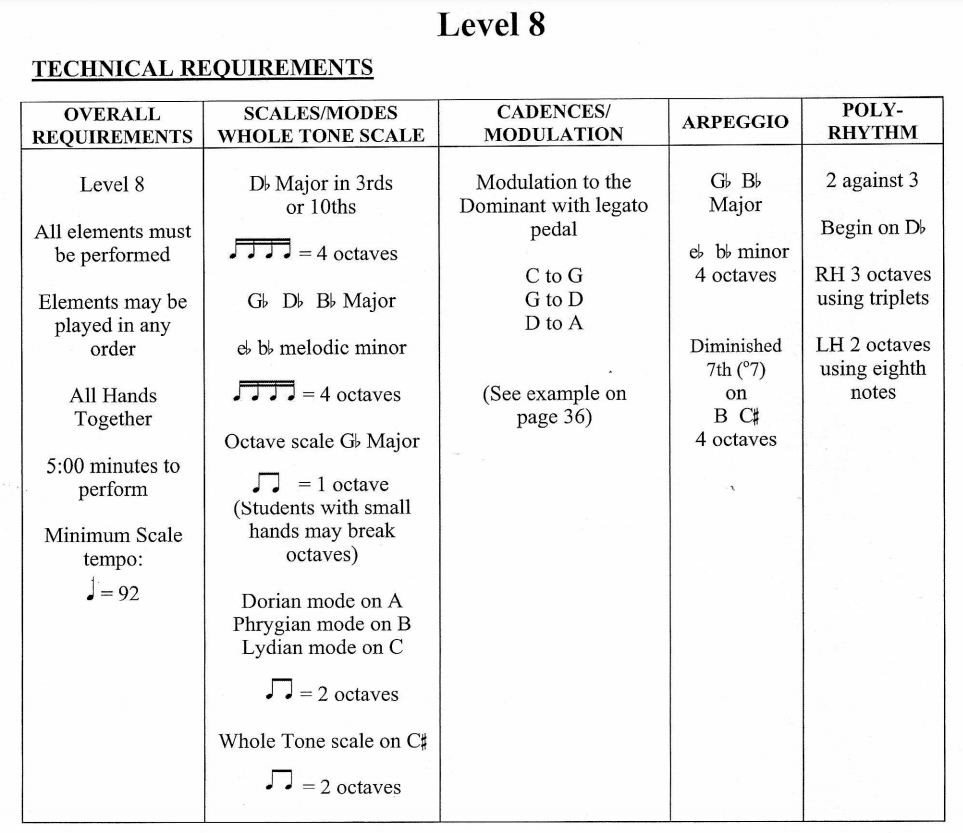
| all elements |
Db Gb Db Bb eb bb Gb A B C C# |
C to G G to D D to A |
Gb
Bb eb bb B C# |
Db |
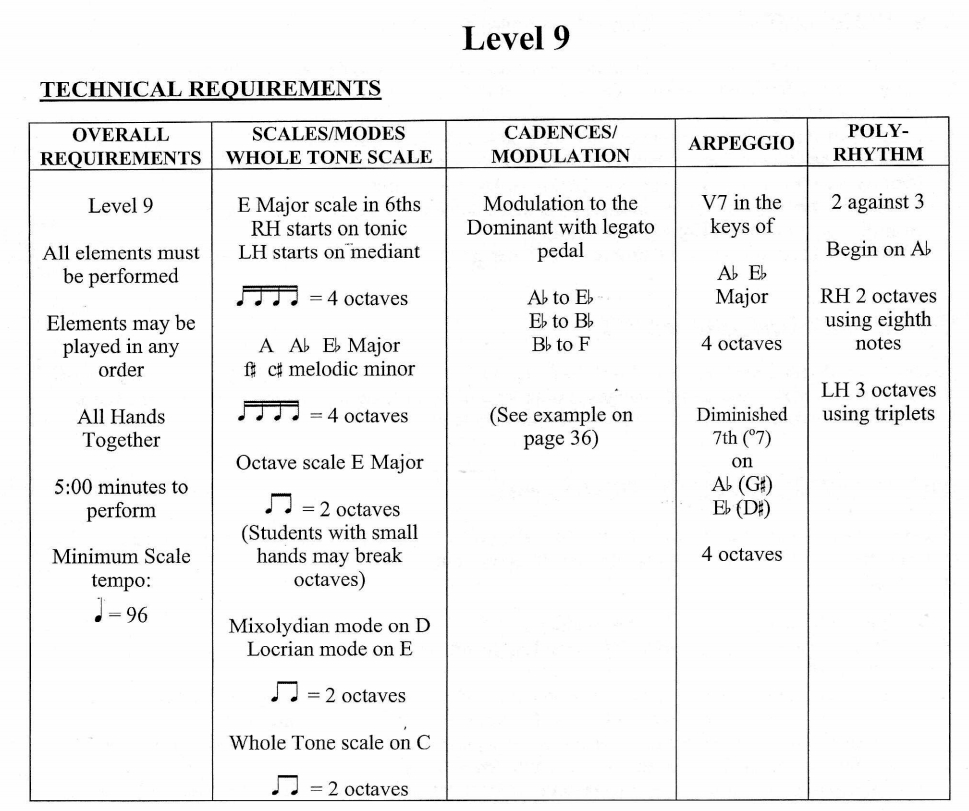
| all elements |
E A Ab Eb f# c# E D E C |
Ab to Eb Eb to Bb Bb to F |
Ab
Eb Ab Eb |
Ab |
PREPARATORY LEVEL
| CM Technical Requirements (Preparatory Level) (4:00 to perform) | |||||||||||||
| |||||||||||||
LEVEL 1
| CM Technical Requirements (Level 1) (4:00 to perform) | |||||||||||||
| |||||||||||||
LEVEL 2
| CM Technical Requirements (Level 2) (4:00 to perform) | |||||||||||||
| |||||||||||||
LEVEL 3
| CM Technical Requirements (Level 3) (4:15 to perform) | |||||||||||||
| |||||||||||||
LEVEL 4
| CM Technical Requirements (Level 4) (4:30 to perform) | |||||||||||||
| |||||||||||||
LEVEL 5
| CM Technical Requirements (Level 5) (4:30 to perform) | |||||||||||||
| |||||||||||||
LEVEL 6
| CM Technical Requirements (Level 6) (5:00 to perform) | |||||||||||||||||||
| |||||||||||||||||||
LEVEL 7
| CM Technical Requirements (Level 7) (5:00 to perform) | ||||||||||||||
| ||||||||||||||
LEVEL 8
| CM Technical Requirements (Level 8) (5:00 to perform) | ||||||||||||
| ||||||||||||
LEVEL 9
| CM Technical Requirements (Level 9) (5:00 to perform) | |||||||||||||
| |||||||||||||
CM Theory CM Master TTN Master All Faber PALs (by TTN) Faber by Composers Sac Jazz Messengers / Sac Jazz Messengers (Messengers Only) All Christmas Sheet Music

This web site designed and maintained by Chwalik Internet Enterprises.
2006-2024 Chwalik Internet Enterprises. All rights reserved.